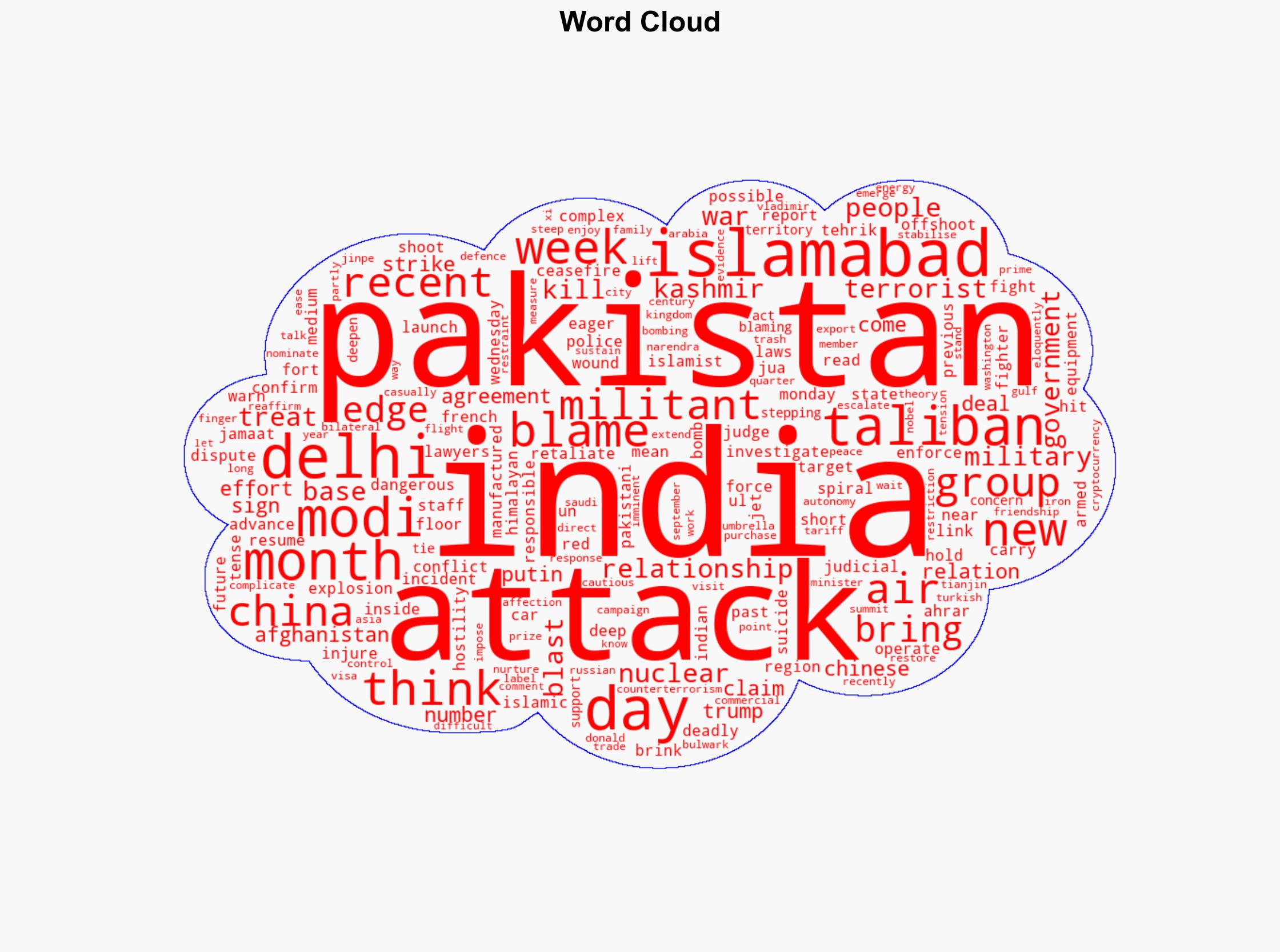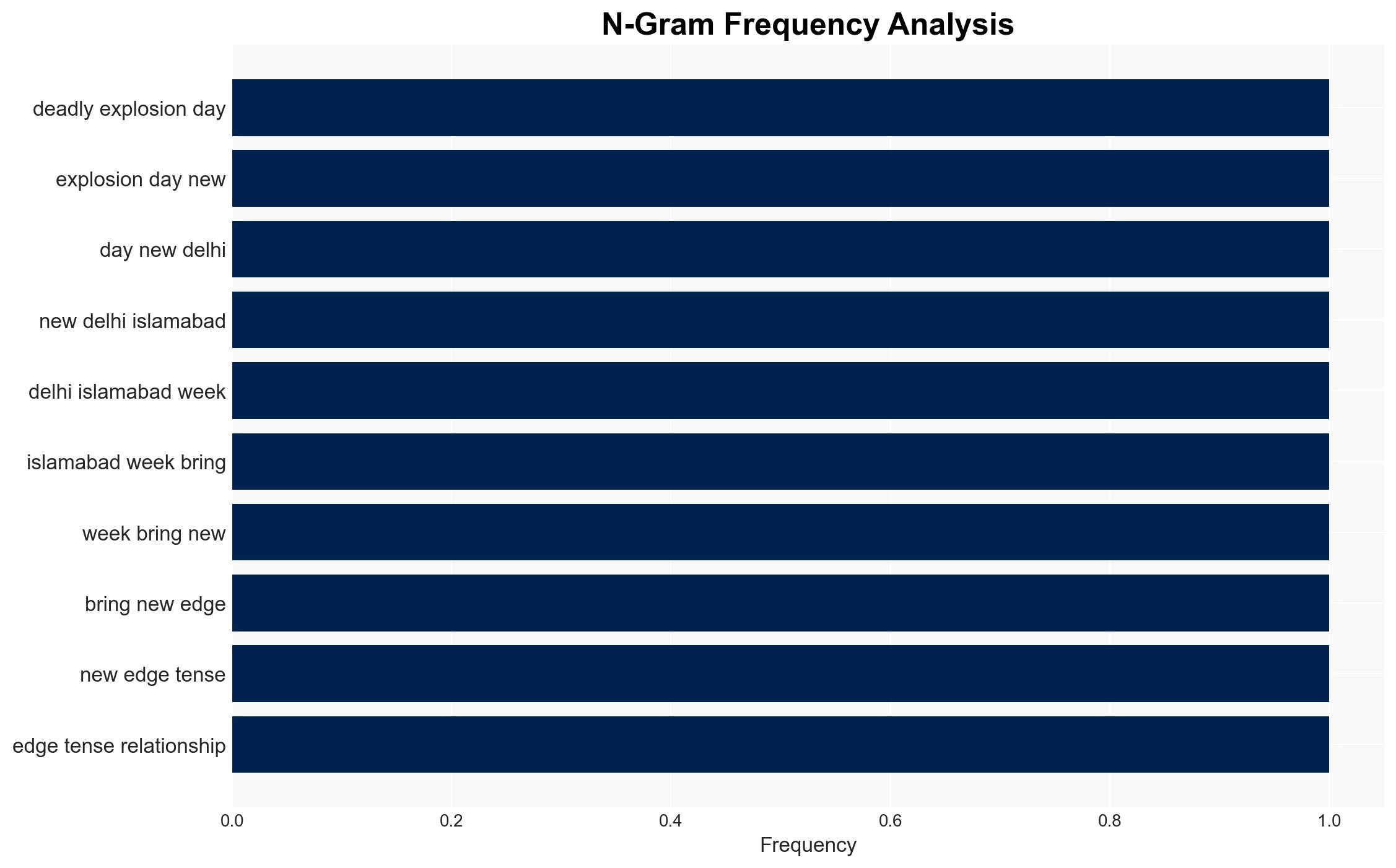India-Pakistan relations carry new edge – The Irish Times
Published on: 2025-11-13
AI-powered OSINT brief from verified open sources. Automated NLP signal extraction with human verification. See our Methodology and Why WorldWideWatchers.
Intelligence Report: India-Pakistan relations carry new edge – The Irish Times
1. BLUF (Bottom Line Up Front)
India-Pakistan relations are experiencing heightened tensions following recent terrorist incidents in New Delhi and Islamabad. The most supported hypothesis is that these incidents are being used by both nations to justify military posturing and strategic realignment, potentially leading to increased regional instability. Confidence Level: Moderate. Recommended action includes diplomatic engagement to de-escalate tensions and intelligence sharing to address cross-border terrorism.
2. Competing Hypotheses
Hypothesis 1: The recent terrorist attacks are orchestrated by non-state actors seeking to destabilize India-Pakistan relations and provoke military conflict.
Hypothesis 2: The attacks are being leveraged by both India and Pakistan to justify military posturing and strategic realignment in the region, with potential external influences exacerbating tensions.
Hypothesis 2 is more likely given the immediate military responses and strategic communications from both nations, indicating a potential use of these incidents to further national security agendas and geopolitical positioning.
3. Key Assumptions and Red Flags
Assumptions include the belief that both nations are primarily motivated by national security concerns rather than external influences. A red flag is the rapid attribution of blame without conclusive evidence, which may indicate bias or an attempt to manipulate public perception. Deception indicators include potential misinformation campaigns by state or non-state actors to influence international opinion.
4. Implications and Strategic Risks
The primary risk is the escalation of military conflict, which could involve nuclear-armed states and destabilize the region. Political risks include the potential for internal unrest in both countries if the situation escalates. Cyber threats may increase as both nations could engage in cyber operations to disrupt each other’s critical infrastructure. Economic implications include potential disruptions to trade and investment in the region. Informational risks involve the spread of propaganda and misinformation, further inflaming public sentiment.
5. Recommendations and Outlook
- Engage in diplomatic dialogue facilitated by neutral parties to de-escalate tensions.
- Enhance intelligence sharing between India and Pakistan to address cross-border terrorism.
- Encourage regional stakeholders, including China and the United States, to mediate and promote stability.
- Best-case scenario: Successful diplomatic engagement leads to de-escalation and renewed peace talks.
- Worst-case scenario: Escalation into a full-scale military conflict with potential nuclear implications.
- Most-likely scenario: Continued low-level skirmishes and diplomatic tension without significant escalation.
6. Key Individuals and Entities
Prime Minister Narendra Modi, Prime Minister Imran Khan, Jamaat ul Ahrar, Tehrik-i-Taliban Pakistan.
7. Thematic Tags
Counter-Terrorism, Regional Stability, Geopolitical Tensions, Military Posturing
Structured Analytic Techniques Applied
- ACH 2.0: Reconstruct likely threat actor intentions via hypothesis testing and structured refutation.
- Indicators Development: Track radicalization signals and propaganda patterns to anticipate operational planning.
- Narrative Pattern Analysis: Analyze spread/adaptation of ideological narratives for recruitment/incitement signals.
Explore more:
Counter-Terrorism Briefs ·
Daily Summary ·
Methodology





